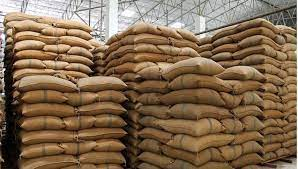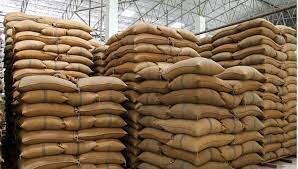Table of Contents
India, the largest exporter of rice globally, is contemplating a ban on most varieties of rice exports, a decision that could further elevate already high global prices due to the disruptive return of the El Niño weather pattern. Government sources have revealed that discussions are underway regarding a plan to prohibit the export of all non-Basmati rice. This proposal stems from concerns over escalating domestic prices and the aim to prevent the risk of further inflation. However, these sources have requested anonymity as the information has not been made public.
If implemented, such a ban would impact approximately 80% of India’s rice exports. While it may potentially lower domestic prices, the move poses a risk of driving global costs even higher. Rice serves as a staple for nearly half of the world’s population, with Asia accounting for about 90% of global consumption. Fears regarding the resurgence of El Niño have already pushed benchmark prices to a two-year high, as the climate phenomenon threatens to harm crops.

India‘s Rice Exports
India holds a substantial share of approximately 40% of the global rice trade and has previously taken measures to restrict the export of certain rice varieties. In the past year, the South Asian nation prohibited the export of broken rice and imposed a 20% duty on shipments of white and brown rice following Russia’s invasion of Ukraine, which resulted in soaring prices for food staples like wheat and corn. The country has also imposed limitations on wheat and sugar exports.
Efforts to obtain comments from representatives of the food, trade, and finance ministries have been unsuccessful as they have not responded to email or text message inquiries. India currently supplies rice to over 100 countries, with major customers including Benin, China, Senegal, Cote d’Ivoire, and Togo.
Upon hearing news of the potential ban, shares of Indian rice millers experienced a decline. KRBL Ltd., the country’s largest rice company, initially fell by 3.7% before paring losses. Chaman Lal Setia Exports Ltd. declined by up to 1.4%, Kohinoor Foods Ltd. dropped 2.9%, and LT Foods Ltd. tumbled 4.4%.
Other Rice-Exporting Countries
Meanwhile, rice importers such as Indonesia, China, and the Philippines have been actively stockpiling rice this year. The World Meteorological Organization has confirmed the development of El Niño conditions in the tropical Pacific for the first time in seven years, which poses a threat of drought to many rice-growing regions. The potential ban by India further compounds concerns over the availability of rice supplies.
Inflation in India
India’s consideration of this ban follows a recent acceleration in consumer price inflation, primarily driven by higher food prices in June. Bloomberg Economics predicts a further rebound in inflation due to the recent surge in tomato prices, a key ingredient in Indian cuisine, as well as an increase in the government’s support price for monsoon-sown crops. Barclays Bank Plc and Yes Bank have subsequently revised their inflation forecasts.
According to data from the food ministry, retail rice prices in Delhi have increased by approximately 15% this year, with the average nationwide price rising by 8%. Prolonged high food costs have the potential to impact popular sentiment ahead of various state elections later this year and the national election in 2024.
As India contemplates this potential ban on non-Basmati rice exports, global rice markets brace for further price increases. The uncertain impact of El Niño and rising domestic prices add to concerns over the availability and affordability of this essential staple crop, raising questions about the potential consequences for millions around the world who rely on rice as a primary food source.













